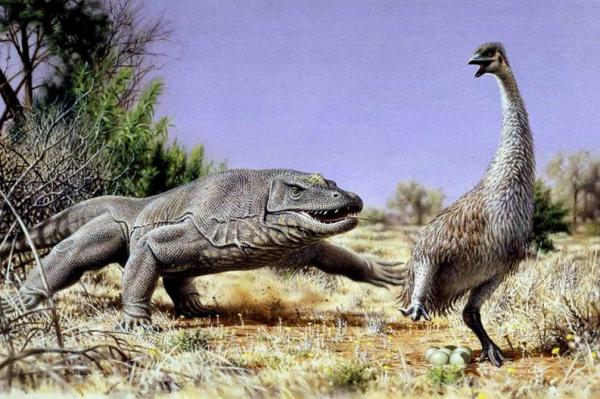
BOULDER, Colo., Jan. 29 (UPI) — Some 50,000 years ago, Australia featured a giant flightless bird called the Genyornis newtoni. It stood seven feet tall and weighed upwards of 500 pounds.
But like the megafauna species that live alongside it — extra large lizards and kangaroos — the giant bird is no more, and humans may be to blame.
Researchers at the University of Colorado, Boulder say they’ve collected evidence that early humans collected and cooked the giant bird’s eggs, diminishing its reproductive success and ultimately driving it to extinction.
“We consider this the first and only secure evidence that humans were directly preying on now-extinct Australian megafauna,” researcher Gifford Miller, associate director of Boulder’s Institute of Arctic and Alpine Research, said in a news release. “We have documented these characteristically burned Genyornis eggshells at more than 200 sites across the continent.”
Miller and his research partners collected burned eggshell fragments from more than 200 dig sites in Australia. Scientists used two dating techniques, radio carbon and optically stimulated luminescence, to place the fragments ages between 54,000 and 45,000 years old. The optically stimulated luminescence method determines when quartz fragments in the shell were last exposed to direct sunlight.
Researchers also analyzed eggshells’ amino acids, which degrade in a predictable pattern. Their analysis revealed a strong gradient from higher levels of degradation to lower levels, suggesting the eggs were exposed to a localized heat source and heated from the bottom up — as if they were deliberately placed on an ember to cook, not burned in a wildfire.
“We can’t come up with a scenario that a wildfire could produce those tremendous gradients in heat,” Miller said. “We instead argue that the conditions are consistent with early humans harvesting Genyornis eggs, cooking them over fires, and then randomly discarding the eggshell fragments in and around their cooking fires.”
Researchers continue to waver on the role humans played in the decline of megafauna in Australia, North America and elsewhere. Studies have alternated between shifting the blame from mankind to climate change and back again.
But increasingly, evidence suggests man played at sizable role in depleting the populations of large birds and mammals around the globe. The latest findings — published in the journal Nature Communications — join that trend.
“Evidence of Australia megafauna hunting is very difficult to find, in part because the megafauna there are so much older than New World megafauna and in part because fossil bones are easily destroyed by the chemistry of Australian soils,” said Miller.
“In the Americas, early human predation on the giant animals in clear — stone spear heads are found embedded in mammoth bones, for example,” he added. “The lack of clear evidence regarding human predation on the Australia megafauna had, until now, been used to suggest no human-megafauna interactions occurred, despite evidence that most of the giant animals still roamed Australia when humans colonized the continent.”





